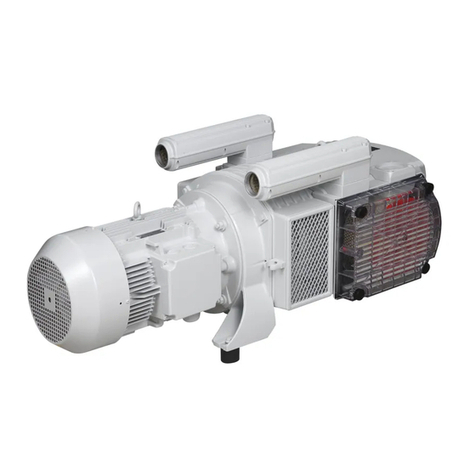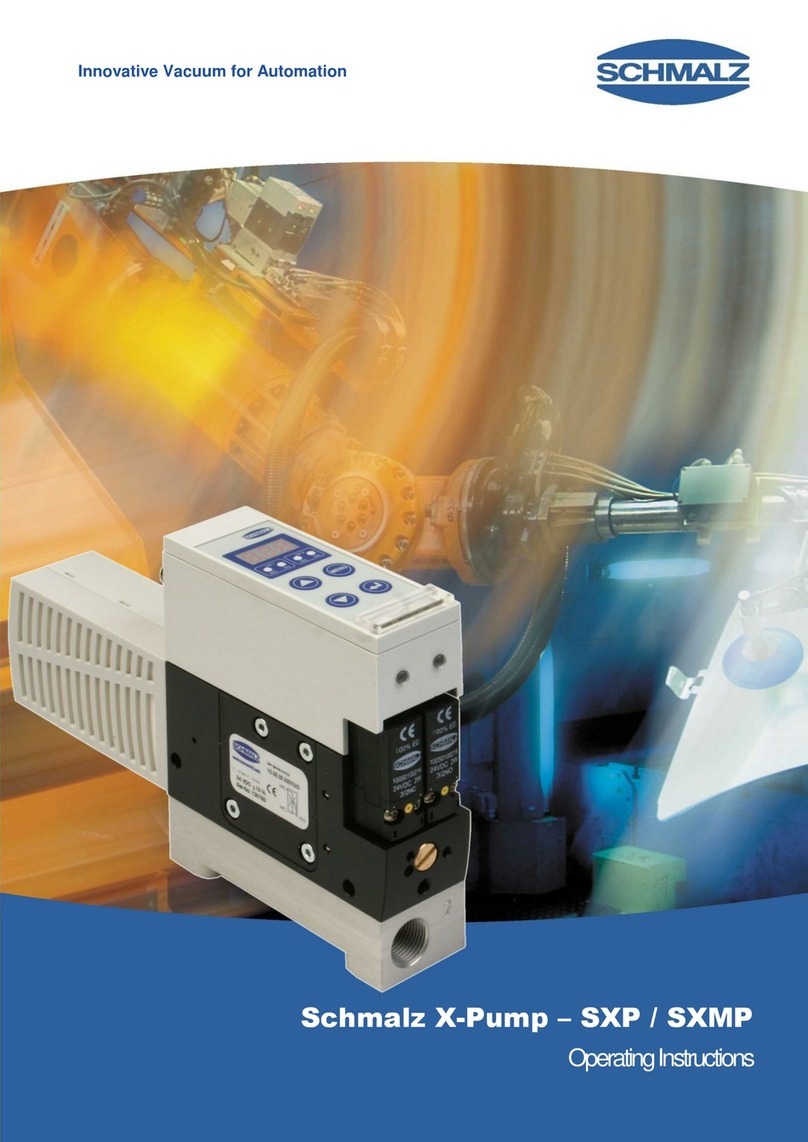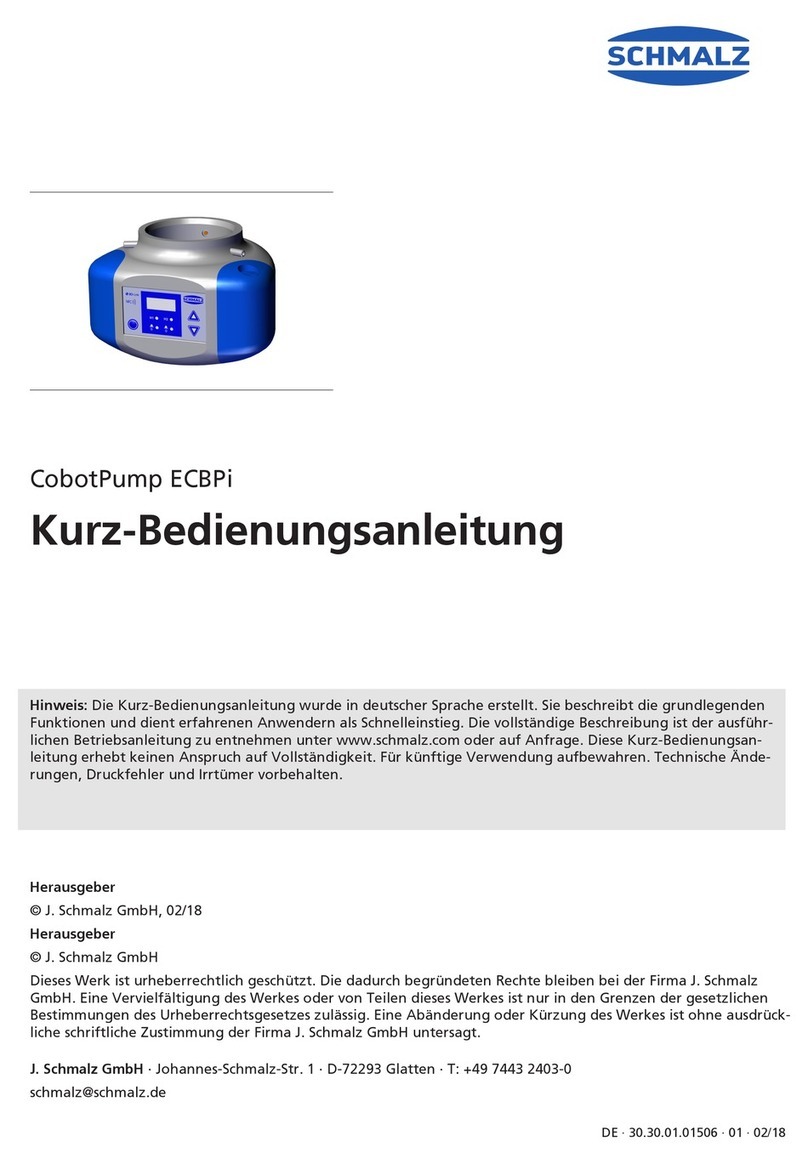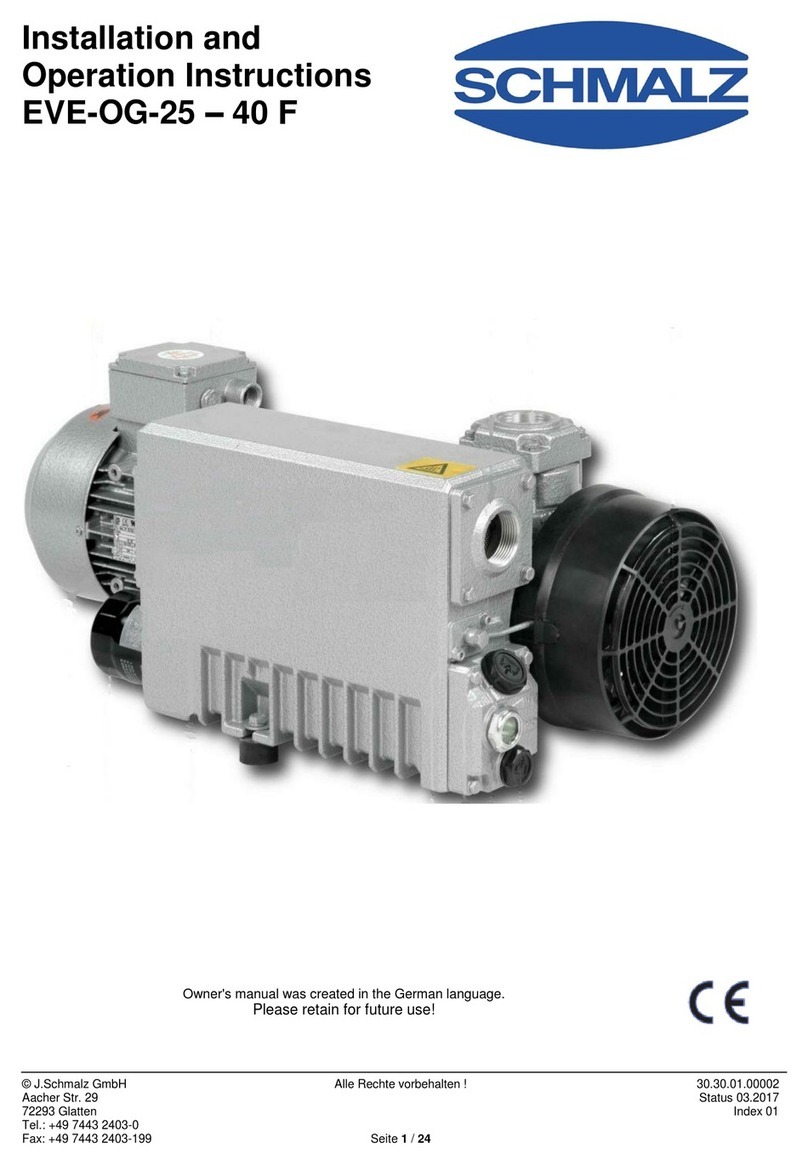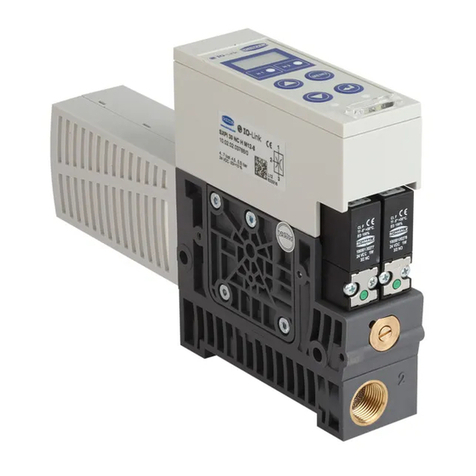
Schmalz X-Pump OperatingInstructions
CONTENTS
1Safety Notes....................................................................................... 1-5
Symbols used in this manual.................................................................................. 1-5
Trademark - TM...................................................................................................... 1-5
General safety notes............................................................................................... 1-6
Use for the intended purpose.................................................................................. 1-6
2Description......................................................................................... 2-7
Overview of variants................................................................................................. 2-7
Basic module .......................................................................................................... 2-8
Expansion modules................................................................................................. 2-9
General functional description ................................................................................ 2-10
Putting into service................................................................................................... 2-11
Installation and operation........................................................................................ 2-11
Mounting................................................................................................................. 2-12
Electrical connections............................................................................................. 2-12
Pneumatic connections........................................................................................... 2-13
3Basic Settings.................................................................................... 3-15
Controls and Indicators........................................................................................... 3-15
Controls................................................................................................................... 3-16
Basic menu................................................................................................................ 3-17
Setting the threshold values [H-1], [h-1], [H-2], [h-2]............................................... 3-18
Setting the zero point (calibration) [CAL]................................................................ 3-19
PIN for basic menu [Pn1]........................................................................................ 3-20
Internal cycle counters [ct1], [ct2], [ct3]................................................................... 3-21
Displaying the internal counters.............................................................................. 3-22
Resetting the internal cycle counters...................................................................... 3-22
Leak detection function (LSF)................................................................................. 3-23
4Expert configuration ......................................................................... 4-24
Configuration menu [SEt], [out], [ctr], [t-1], [-L-], [bLo]............................................ 4-24
Unlocking the extended configuration menu........................................................... 4-25
Display settings......................................................................................................... 4-26
Setting the unit of measurement [uni]..................................................................... 4-26
Setting the reaction time......................................................................................... 4-26
Eco mode [Eco]....................................................................................................... 4-27
Setting the bus system options............................................................................... 4-27
PIN for the extended configuration menu [Pn2]...................................................... 4-28
Clearing all settings (clear all) [rES]........................................................................ 4-30
Outputs ...................................................................................................................... 4-31
Configuring the outputs [out]................................................................................... 4-31
Hysteresis mode –output type NO......................................................................... 4-33
Hysteresis mode –output type NC......................................................................... 4-33
Comparator mode –output type NO........................................................................ 4-34
Comparator mode –output type NC....................................................................... 4-34
Setting the reaction time [dLY]................................................................................ 4-35
Air saving and diagnostic functions....................................................................... 4-36

